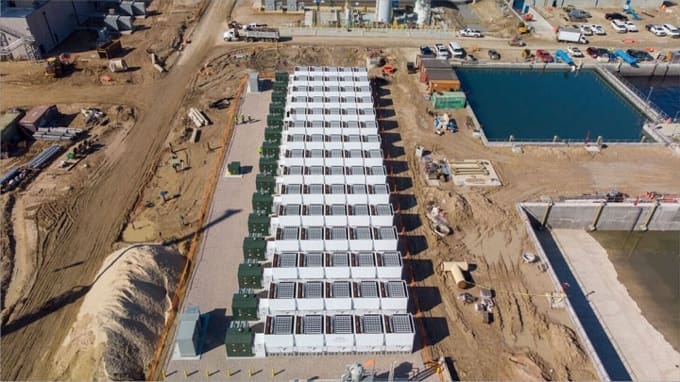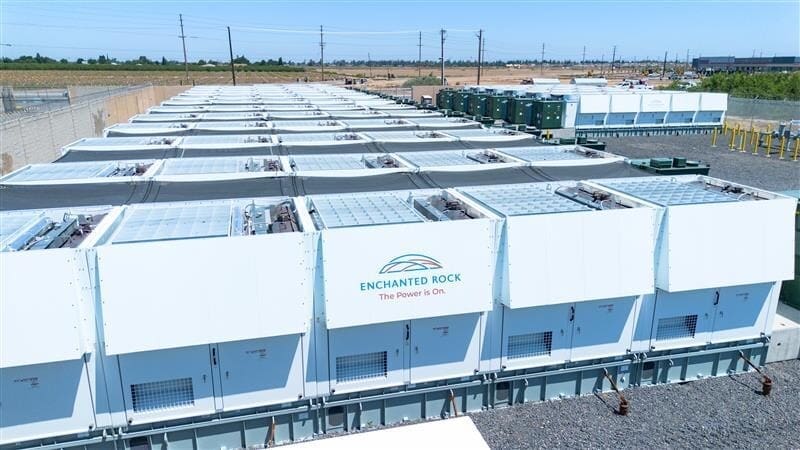We all know the feeling. We typically see and hear it as the pitter-patter of rain intensifies and the winds begin to follow course. We take comfort in being in the confines of our homes, safe from Mother Nature’s wrath outside, but our anxiety rises when the lights start to flicker. Then, when that last fade of electricity turns into an uncertain reality, a pit develops in our stomachs. The power is out, and when it comes back on, it monopolizes our thoughts. The wait begins.
Now consider that same weather event striking a medical facility or large industrial outpost. Customer responsibilities are top priorities, and when the electrical grid cannot deliver, problems arise. Responding in parallel, microgrids have risen to the task as the latest solution to combat the current state of the electrical grid and the inadequacies that plague its existence. When the grid fails to deliver, microgrids offer a viable solution for backup power.
Diesel-powered backup systems
According to Allan Schurr, Chief Commercial Officer of Enchanted Rock, backup systems typically rely on diesel power as the primary solution. Generators and other units have historically been designed to use diesel as fuel and have been able to be staged anywhere needed. However, as the world has transitioned to a clean energy demand, diesel use has come into question.
Enchanted Rock has served its customers since 2006, but its current strategic direction did not take hold until 2009 after Hurricane Ike. The destruction caused fortified the need to develop a solution for severely damaged infrastructure.
“Hurricane Ike was a transformational event for critical infrastructure in the Houston area,” says Schurr. “The City of Houston’s water infrastructure backup facility failed during Hurricane Ike and Enchanted Rock helped the city build out a more robust infrastructure through a partnership with one of the big retail electricity providers. That was a diesel generator and a better-designed maintenance plan and practice.”

In 2014, Enchanted Rock recognized that the future of backup power generation would deviate from diesel-designed systems to natural gas. While diesel backup power generation provides the proverbial horsepower needed, a significant area for improvement is the reliance on above-ground supply chain means. If infrastructure is compromised and diesel cannot be trucked in or delivered due to impassible routes, backup stops when the diesel supply depletes.
Enchanted Rock designed its own natural gas generator system in 2014 to avoid these potential issues. Because natural gas travels underground, this idea catalyzed the notion that it could avoid damaged infrastructure issues after catastrophic events.
“Natural gas can uniquely match up to the performance of diesel, which is no small task because diesel has been the power horse of the backup power industry,” says Schurr. “Our model allows us to be competitive with diesel generators at a higher level of performance. Natural gas provides an extensive underground fuel supply allowing run time to be continuous, sometimes for weeks or months if the grid is unavailable.”
Diesel-powered backup systems additionally suffer from a lack of due diligence care. They have historically been overlooked when it comes to the maintenance they require, largely because the owner does not want the facility offline for any period of time.
“Our business model is a dual-purpose microgrid in lieu of a diesel-powered backup generator,” says Schurr. “The microgrid backs up the facility when the grid goes down and sells the services to the grid operator, so it is frequently tested under load in performing that latter function.”
What is a microgrid?
Microgrids serve as a backup power generation source. They are small-scale power grids that operate by their power source to generate electricity for a specific area or customer. These vary from medical facilities to water distribution facilities.
According to the U.S. Department of Energy, microgrids are a single entity consisting of interconnected loads and distributed energy sources. They are self-contained and can deliver power autonomously.
Microgrids improve resiliency by reducing pressure on the primary electric grid. They increase efficiency by balancing supply and demand and encourage and support sustainability, providing an outlet for integrating renewable energy sources to reduce greenhouse gas emissions.

Microgrids serve as backup power solutions and include critical components, including the power sources that produce the electricity for the microgrid itself. Through technological advancement, Enchanted Rock has determined natural gas to be the most viable and efficient power source for its solutions.
Microgrids also include energy storage systems to house or store unused energy to be used as needed. In addition to distribution infrastructure, microgrids also include control systems that serve as the system’s brain to manage its operation.
Schurr indicates that microgrids come in two different solutions. They can either be used for one specific customer or strategically placed in a central location to serve multiple customers. The single-customer use dominates the market as the most popular selection.
Factors influencing microgrid use
Microgrids have proven their relevance and importance as backup power solutions. Catastrophic events typically enlist microgrid response, but the state of surrounding infrastructure and distribution systems plays a critical role. While natural gas supply can avoid disruption from heavy rain and intense winds because of its underground distribution framework, microgrids cannot provide significant assistance when powerlines are damaged or down. Schurr says there are more prevalent outcomes than this one.
Instead, microgrids have been more frequently available to provide the power generation they are designed for. In most cases, the catastrophic event impacts the electrical grid supply. With microgrids being placed strategically as close to the primary power source as possible, their ability to come online has become increasingly dependable.
“We want to be as close as possible to the load to limit vulnerability,” says Schurr.
Schurr offers Winter Storm Uri as an example to explain the coexistence of the weather event and the microgrid solution. The distribution lines delivering electricity to customers were left mainly undamaged. Instead, cold temperatures elevated loads that put stress on the generation side of the equation. He points to backup generator failure because of the lack of gas.
“We ran about 140 microgrids in support of customer outages that week and ran extremely well supporting our customers,” says Schurr. “They didn’t experience the rotating grid outages that the grid operator ordered to balance the available supply and demand. So there wasn’t much physical damage to the grid, but there was a shortage of supply, and some customers were without power for 60 hours straight during those outages.”
Looking at the future of microgrids
According to Schurr, microgrids are free of an array of challenges. In fact, he feels the only challenge is their implementation, which comes from the need to justify design and construction costs. Their fuel source offers no downside, with natural gas being widely available, and they have proven their capability in real-time events like Hurricane Ike and Winter Storm Uri.
“I think customers are coming to the conclusion that they are more and more dependent on electricity for their businesses, and the grid is not getting better in delivering the level of reliability they require,” says Schurr.
Although reliability is critical, cost is the driving factor, as with any other business considering any other type of solution. Schurr indicates certain factors must be considered when analyzing microgrid expenditures, and they include the cost of an outage should no backup solution be in place, changes in supply, equipment damage, and the impact of health, safety, and environmental incidents and events.
With the need to justify cost, Schurr sees two major trends rising within the next decade. Grid reliability requirements will certainly increase, and the need for dispatchable capacity to balance supply and demand will additionally grow in importance.
“The grid is not getting any more reliable, and at the same time, customer needs are extremely high, and we are seeing more severe weather,” says Schurr. Microgrids will be the preferred way to get onsite resiliency because of their cleanliness and flexibility, and with more and more renewables going on the grid, we need this level of dispatchable capacity to keep the lights on for everyone.
Headline image: The generators are part of California’s Electricity Supply Strategic Reliability Reserve Program. Photos courtesy of Enchanted Rock.
Nick Vaccaro is a freelance writer and photographer. In addition to providing technical writing services, he is an HSE consultant in the oil and gas industry with twelve years of experience. Vaccaro also contributes to SHALE Oil and Gas Business Magazine, American Oil and Gas Investor, Oil and Gas Investor, Energies Magazine and Louisiana Sportsman Magazine. He has a BA in photojournalism from Loyola University and resides in the New Orleans area. Vaccaro can be reached at 985-966-0957 or nav@vaccarogroupllc.com.






